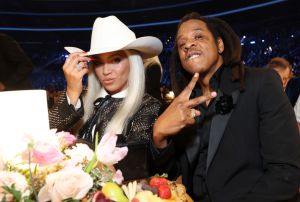If you haven’t been up on the #BlackburnTakeover at Howard University, just know it’s a mess—literally.
The sit-in protests that have captured media attention since they began on Tuesday at the university’s Armour J. Blackburn University Center are all about the mess that comes in the form of living conditions at the well-known HBCU. Students said that they have been subject to rodents, roaches, and mold in their dorms and even in the spaces where they eat, among a list of other issues, and school administrators have responded with inaction, slow action, and an unwillingness to communicate with those affected the most—the students.
According to The Hilltop, protesters said that, over the last two months, they have been made to grapple with substandard living conditions and a slew of administrative issues that extend well past the scope of minor inconveniences.
These issues include, but are not limited to, a campus-wide WiFi shutdown that reportedly occurred the first week of September due to a cyber-attack; residents in College Hall North being left without running water and air conditioning for more than 48 hours; mildew in the showers, insects in the dorms and students being displaced constantly due to all of the above.
Students said they tried to address their easily understandable (because…ew) concerns without pivoting straight to protests, but administrators wouldn’t participate in discussions.
On Tuesday, students, alumni, and Shaw-Howard residents gathered for a town hall hosted by the Howard University Student Association, but when they looked for their president and other administrators, they found they might as well have been talking to the roaches and rats directly to request that they get gone.
“The HUSA Town Hall hosted today was intended to connect students to resources and be a meeting point for peers with questions, grievances, and concerns regarding their Howard experience,” one student stated, according to The Hilltop. “Administrators were invited to attend but unfortunately did not.”
The HUSA said Howard President Wayne A.I. Frederick and every member of his administration were extended an invitation to the meeting and none of them showed up, so what choices were students left with but to stage protests?
Of course, the protests did inspire school officials to declare that they would take action—against the protesters.
According to the Washington Post, on Wednesday, administrators sent out an email warning that protesters risked “consequences up to and including expulsion from the university.” This prompted demonstrators to add legal and academic immunity to their list of demands.
The list of demands also included the reinstatement of student, faculty, and alumni representation on the school board of trustees after a measure was announced in June that they were being phased out after what officials called an “extensive review” that “included consultations with an external firm and more than 40 interviews with students, alumni, faculty members, former trustees and other members of the community,” the Post reported.
School administrators eventually changed their tune, apparently, saying in a statement that the “well-being of our students is one of our top concerns and the university continues to offer support to students who report needing assistance.”
“In the past two weeks, university administrators prioritized meeting with the students over lunch and already addressed many of the concerns this group of students has voiced,” the university went on to claim.
As for the issue with the board of trustees, administrators said they “have addressed this decision with the student protestors in recent talks and have made clear that the decision was made with increased efficiency and real stakeholder representation in mind.”
“The University is continuing to develop new ways to encourage meaningful and truly representative leadership from its students,” the statement continued.








Comments
Bossip Comment Policy
Please read our Comment Policy before commenting.